
Toy Battle is a small box head-to-head board game with a familiar premise to anyone who has played popular lane battle video games like Clash Royale. Its 3-page rulebook is easy to learn, and the game plays in 15 minutes or less. The question is, of course, does this type of game work as a board game?
After just a few minutes of rules, you’ll immediately see that Toy Battle is much simpler than the video games it draws inspiration from. This isn’t Clash Royale, the board game. Toy Battle takes the core idea of units moving down lanes and trying to capture the opponent's castle and strips away all of the fluff and complexity. What we are left with is a game that is intuitive and fast, while still retaining the strategy and fun of the genre. Well done, I say.
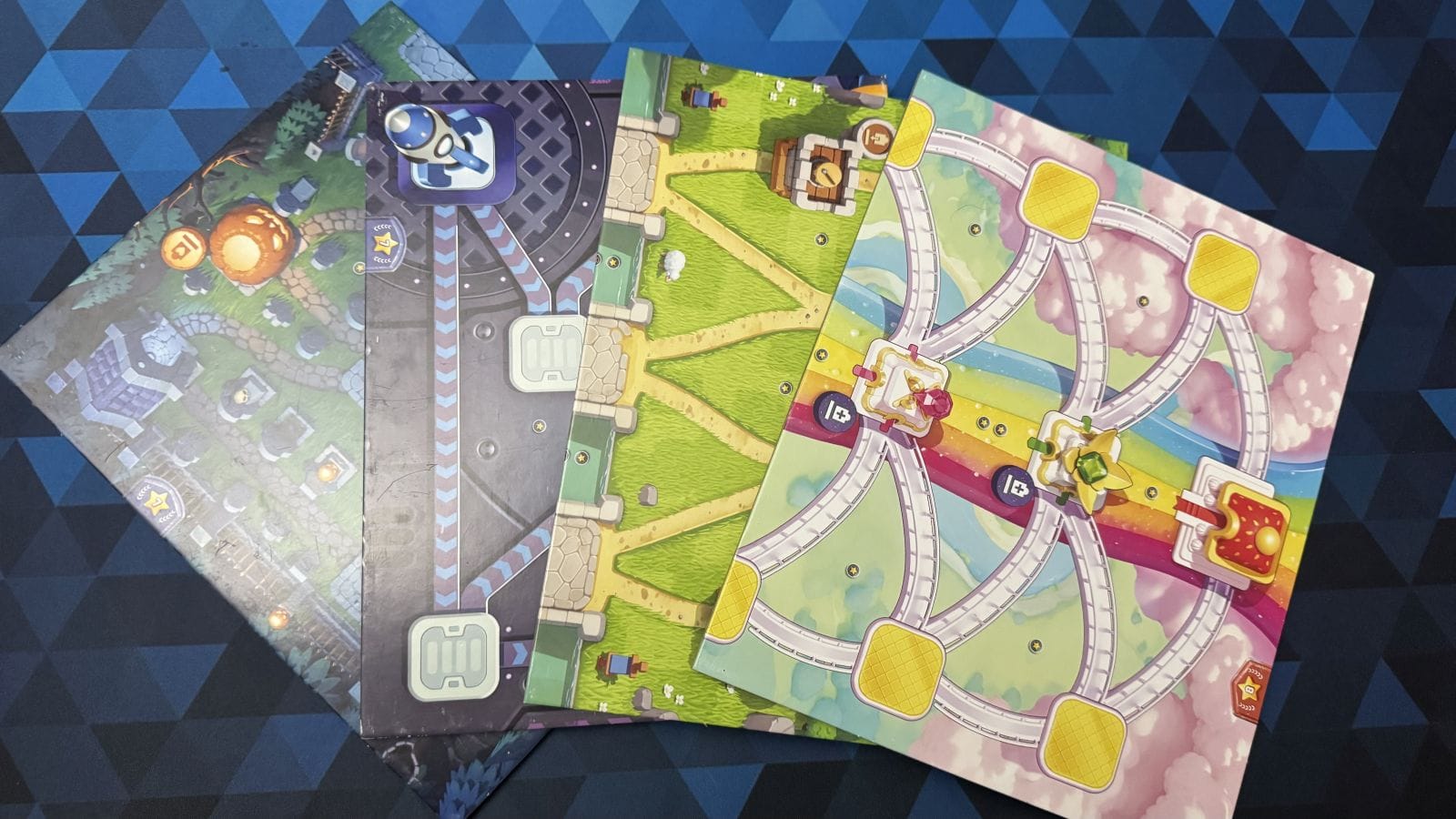
To play the game, you first need to choose one of the six included maps to use. After that, each player randomly removes 4 units from the game, draws some starting units, and the battle begins. On your turn, you can either play a single unit or draw two units. Each unit has a number from one to seven, or in the case of the all-powerful Viking Rubber Ducky, no number.
The numbers control when and where you can place each unit on the battlefield. Starting from your headquarters (HQ), a unit can be placed in any blank space that connects back to the HQ. After that, each piece must trace a connected path that passes through your own pieces back to your HQ. The numbers are what allow you to take control of spaces your opponent is in. A unit with a higher number can be placed on top of a piece from either player with a lower number.
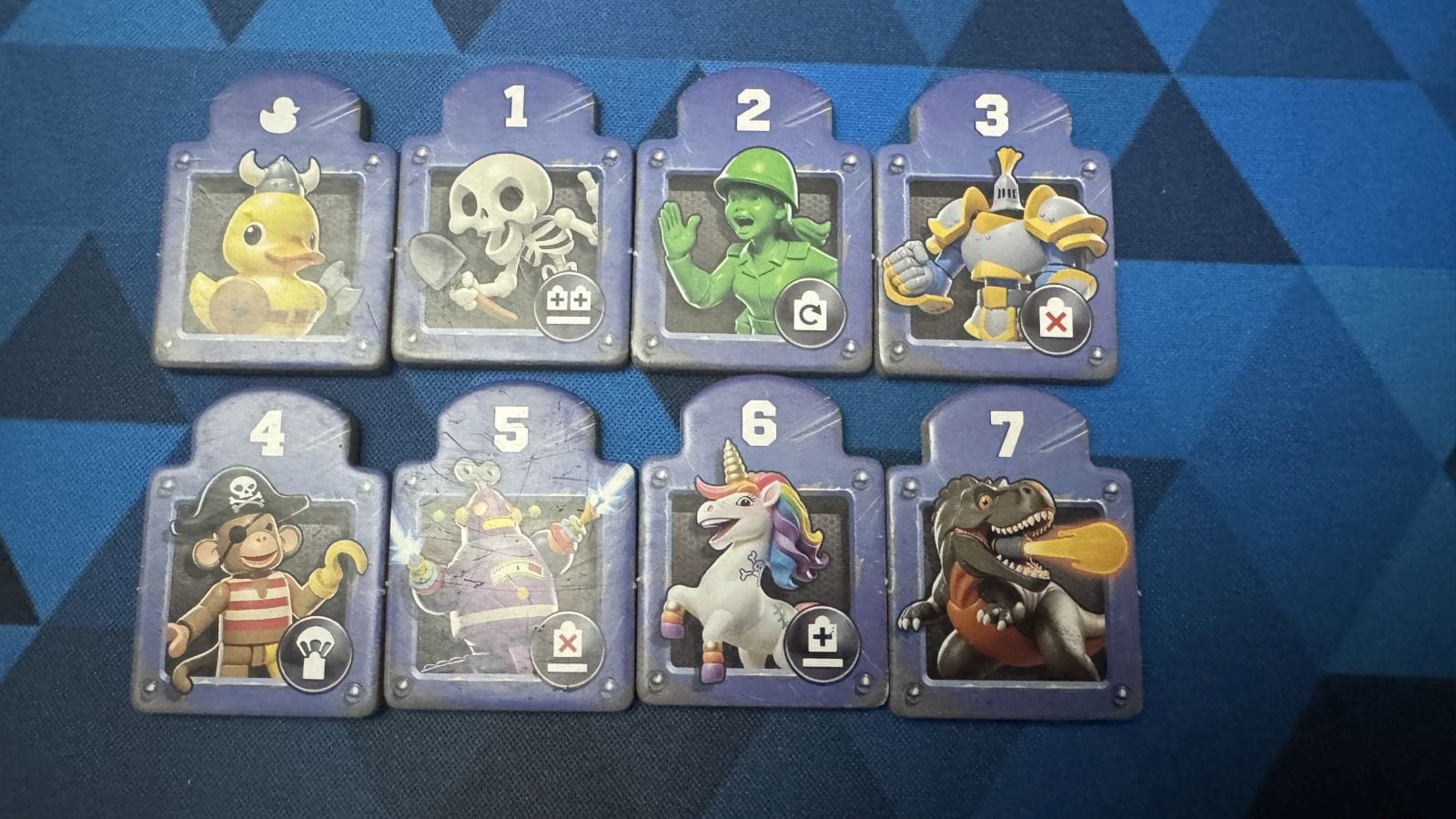
Ok, so laying down pieces and covering up lower numbers sounds pretty easy. Keeping in mind that you always need to have a connected path back to your HQ, that means disrupting your opponents' supply lines (ie, breaking their path) is an important aspect of the game. That still doesn’t seem like enough meat to stay interesting for long, right? I’m so glad you asked.
Besides having a number, each piece also has a special power. Remember that Rubber Duck? It has no number, but can be placed on top of any other piece. The 1 Skeleton? It allows you to draw two more units when you place it. The 5 Knight? How would you like to kill an adjacent unit? On and on it goes. Both players have the same pool of units and abilities to choose from, so the real strategy comes in when you combine all of these aspects, and each player's skill and planning is put to the test.
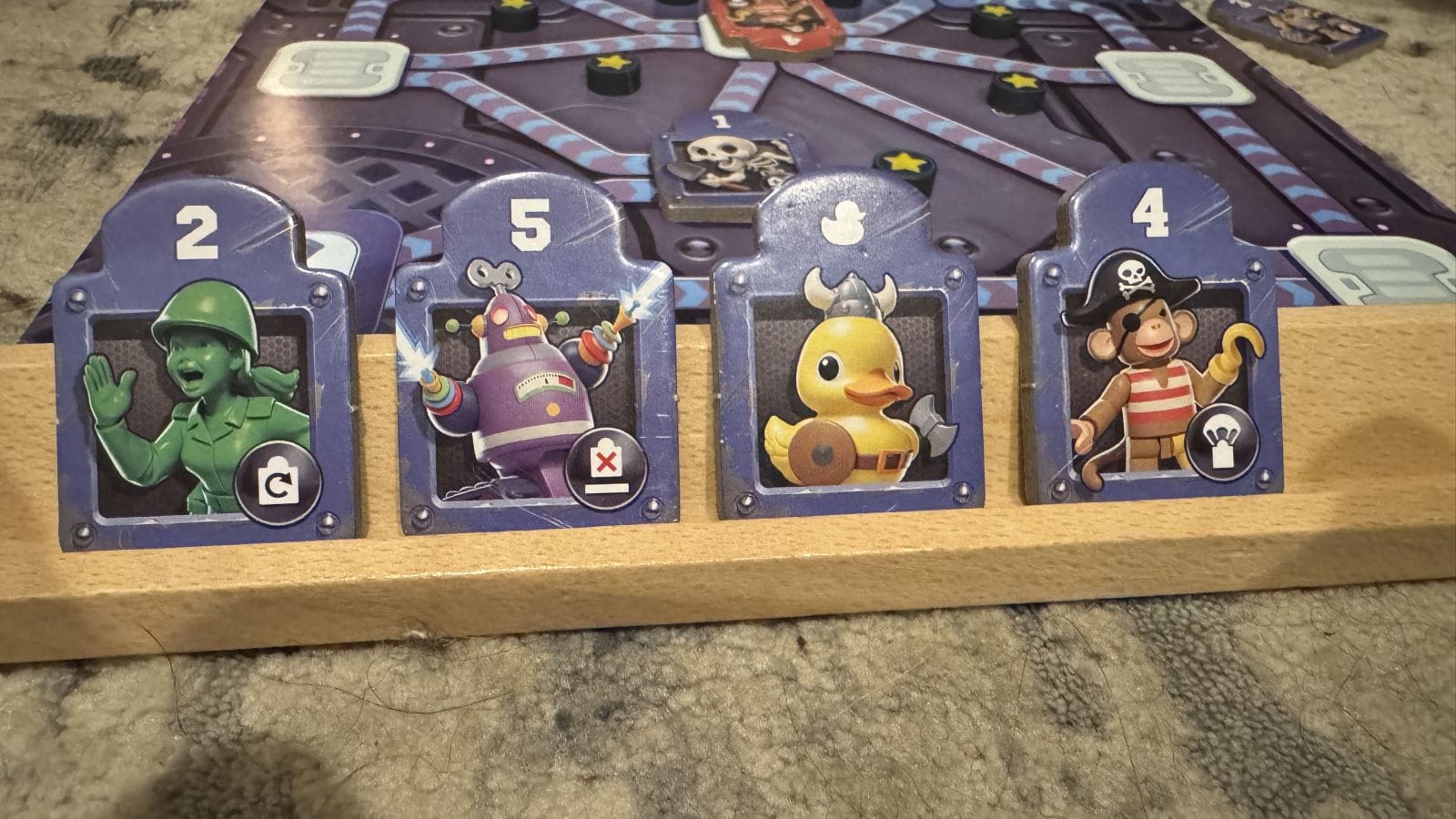
Giving each player the same set of units keeps things from being overly complex and eliminates any concern of balance issues. I find myself wishing for some asymmetry to ramp the strategy up even further. The game dabbles in this by having each player randomly remove 4 units at the start so you never know exactly what you are going to get. This bit of randomness, combined with the random unit draws, can lead to some snowballing or imbalance. Starting with Skeletons or Unicorns that let you draw extra units for free can be a huge advantage. Similarly, having Army Girls at the right time for extra placements can be game-winning. The randomness can help or hinder, and either way is something you should know if that kind of thing ruins games for you.
If that were all there was, Toy Battle would already be a fantastic game. There is quite a bit of strategic depth for a game that is all about toys fighting each other. We aren’t done, though. The game includes three double-sided boards for a total of six maps, and every single map has a unique layout and map-specific special rules. Just to name a few, the Graveyard allows you to resurrect eliminated units, the Swimming Pool requires you to pay attention to special placement rules, and the Tower map allows you to take a peek at your opponent's unit tray and stun a unit. Having a handful of maps not only keeps the game fresh but adds additional layers of strategy to consider as you play each one.
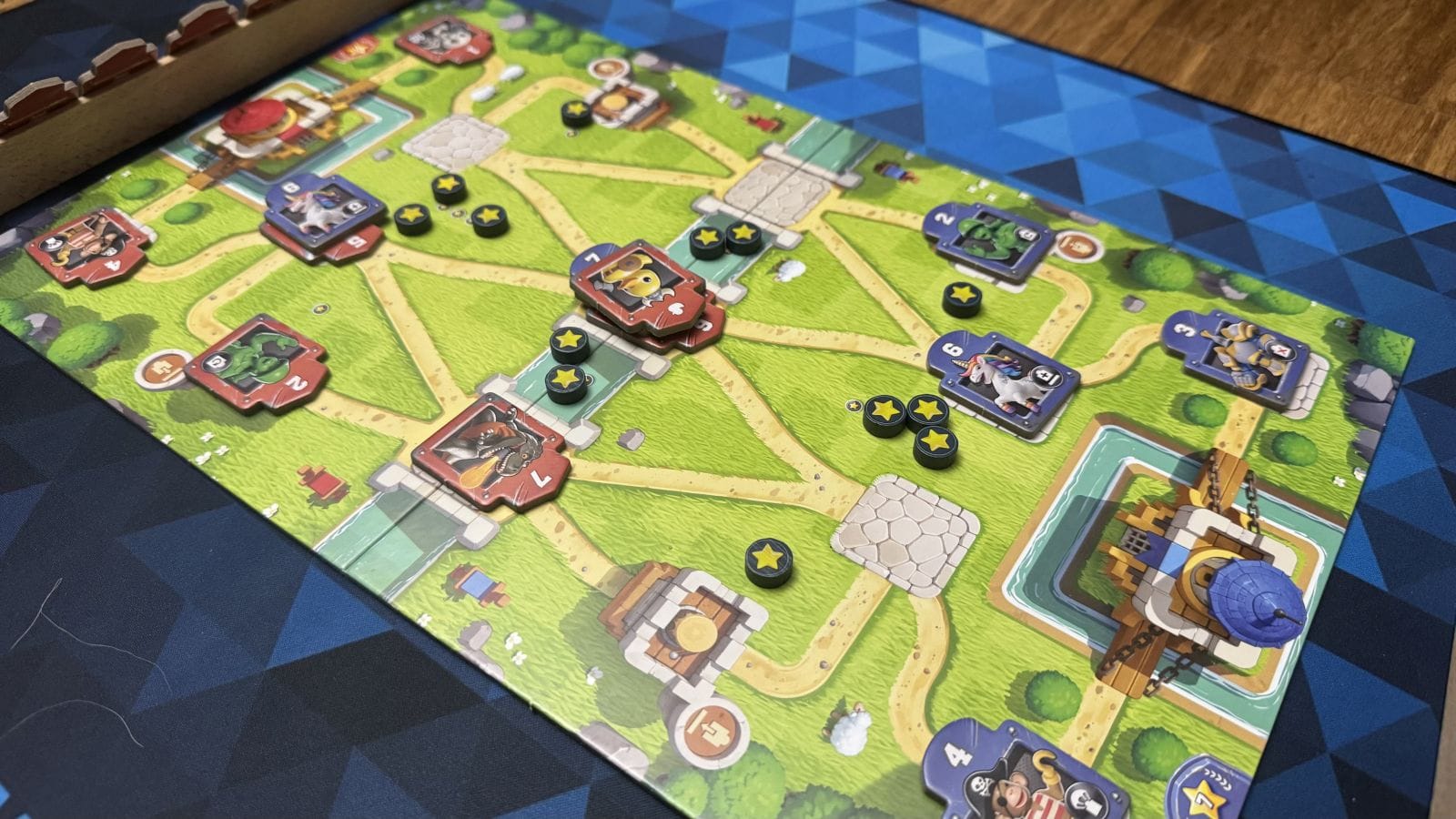
Players will use the map and units on their tray to the best of their ability to win in one of two ways. The obvious way to win is by placing a unit on top of your opponent's HQ, keeping in mind you need a connected path of your own units all the way back to your own HQ. An alternate path to victory is by collecting stars. Each map features zones that you can attempt to completely surround with your units. If you do, you get to collect the stars in that zone. The maps all have different thresholds for the number of stars you need to win, but collect the right amount, and you win immediately. The star route applies yet another layer of strategy to pay attention to and allows you to pull off some really clever plays. The Knight, for example, being able to remove an adjacent unit could allow you to set up a sneaky capture on a group of stars that your opponent didn’t expect. Having two ways to win means you have to stay on your toes and anticipate threats from multiple directions.
It should be pretty clear by now that I really like this game. Who is this game for, though? Everyone. Well, maybe not everyone, but I’ve been playing it a lot with other adults and my kids. With adults, the head-to-head battles are quick and brutal. There is plenty to chew on, but the decisions are kept fast by the small pool of units and simple ruleset. This is a game where you can’t help but play just one more time.
Playing with my kids has also been a blast. With my 4 and 6-year-olds, we started out ignoring the unit and map abilities and just playing with the number rules. Once they had the hang of that after just a few games, I introduced the unit and map rules easily. None of the unit or map interactions are very complicated, and they were able to pick them up without much issue. They might not have a grasp of good strategy yet, but we still have a great time.
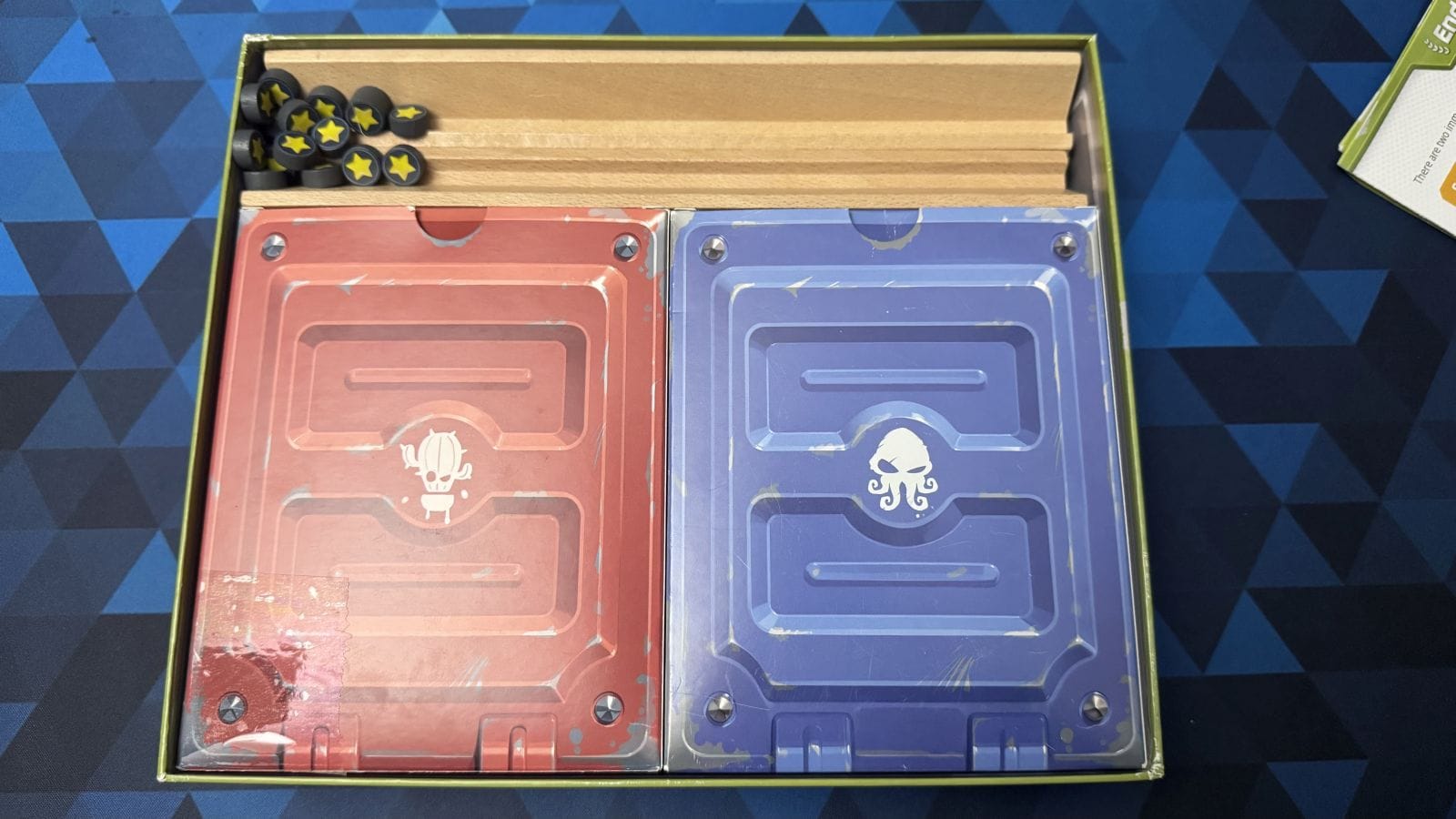
Production quality on Toy Battle is quite nice. The box is exactly as big as it needs to be with virtually no wasted space. The two-player sets of units come in their own little cardboard toy boxes, and the real wood unit trays are a very nice addition. The artwork throughout plays into the Toy theme and works quite well to evoke your imagination, even though all the units are just cardboard.
Toy Battle gets an easy recommendation from me. If you like head-to-head games, this is a no-brainer. You can easily take it anywhere, set it up in seconds, and play in just a handful of minutes. My kids love it, and so has everyone I’ve introduced it to. Toy Battle is a masterclass in streamlining a concept down to its bones and then letting it breathe. There is a temptation to want more, but Toy Battle shines as it is.
Toy Battle
Excellent
Toy Battle is a fast and fun head-to-head battle that players, young and old, can enjoy. With very simple rules and tons of variety in the box, you can get playing right away and enjoy it for a long time. It will have you playing just one more game long after you thought you’d be done.
Pros
- Simple ruleset
- Small box crammed with content
- Streamlined play with emergent depth
Cons
- Randomness can be impactful
This review is based on a retail copy provided by the publisher.
